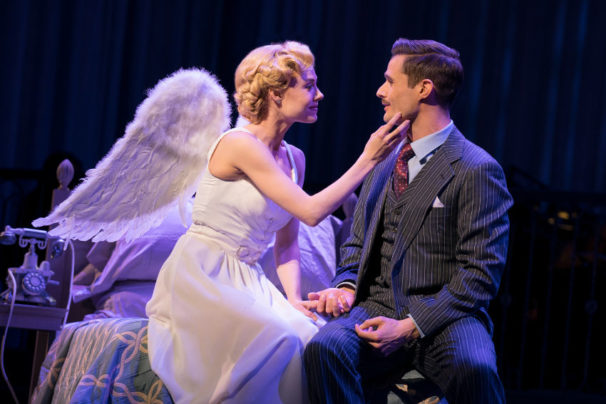
Rodgers & Hart’s I Married an Angel Director-Choreographer Joshua Bergasse
Over the past few seasons Sara Mearns has found a home at City Center for projects outside of (and sometimes very far removed from) her “day job” as one of New York City Ballet’s leading ballerinas.
At Fall for Dance she has collaborated with a contemporary hip-hop duo (Sebastien Ramirez and Honji Wang), performed a Broadway-style showpiece in which her future husband Joshua Bergasse surrounded her with an ensemble of elegant admiring men; and last year reprised her radiant, resplendent suite of Isadora Duncan solos (shaped for her by Lori Belilove) that was first presented by Paul Taylor’s American Modern Dance.
It was on the City Center stage that Mearns expanded her dramatic range with her bold, vibrant performance as Victoria Page in Matthew Bourne’s The Red Shoes. And last week City Center’s Encores! series – which brings back rarely-seen, sometimes nearly-lost Broadway musicals for one-week runs –added speaking on stage to her expanding range of experiences.
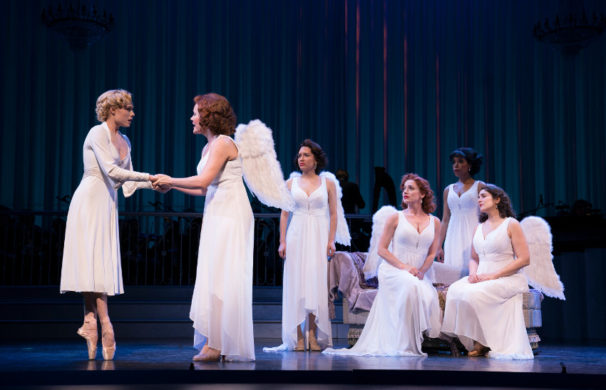
As the season’s second Encores! production, City Center chose I Married an Angel, the 1938 Richard Rodgers-Lorenz Hart musical that was choreographed by George Balanchine, with a central (primarily dancing) role for his then-fiancee, Vera Zorina. (They married during the run of the show.) Celebrating its 75th anniversary this year, City Center’s programming has emphasized aspects of its own history. Since NYCB found its first home at City Center, and Balanchine created numerous enduring masterworks in its studios between 1948 to 1964, a musical that originally featured his choreography made sense. In a neat echo of the original, this production’s director/choreographer Joshua Bergasse and Mearns, his leading lady, are newlyweds.
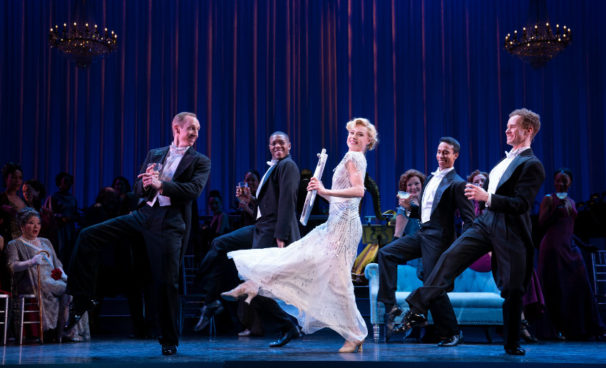
As a vehicle for Mearns, the show is a delight – though it contains much that is stilted. From her first appearance upstage, emerging from gauzy draperies, she was a winningly warm and gently witty fantasy creature. As the angel who hears a world-weary Budapest banker proclaim that the only way he’d ever marry is if an angel came down from heaven, and dutifully appears on cue – she had a focused, natural presence, an ease in delivering her lines. And she danced like a dream.
Her basic angel vocabulary consisted of pretty standard ballet steps, but Mearns’s creamy phrasing placed her in a rarefied realm as she carved a path among mere mortals. The show features two extended dance sequences, one in each act. One is a Honeymoon Ballet that depicts a whirlwind world tour touching down in Russia, Germany, Ireland, China, and the USA (complete with cowboys). Mearns appears throughout its duration, altering her approach and attack from moment to moment. Accompanied by smaller, or larger, groups from the production’s top-notch dancing ensemble – she delivers brief, flavorful samplers of stylized dancing for each locale.
Encores shows are allotted a 10-day rehearsal period (though Bergasse, Mearns and a few leading dancers had pre-production time to generate the larger choreographed sections) and kept Mearns in a simple white practice-clothes outfit as she proceeded from one national number to the next. She also seemed to be alone on this honeymoon, as the husband was offstage until that final sleigh ride. In the sections that called for a partner, Mearns danced with former NYCB dancer Christian Tworzyanski.
The major dance sequence in Act Two also features contrasting sections with abrupt transitions. In this “Roxy Music Hall” sequence, introduced by a jaunty song of that title, each segment is identified as one character’s fantasy — somewhat like an early, more awkward attempt at what Sondheim achieved in the “Loveland” sequence of Follies.
In the illustrious Rodgers and Hart canon, I Married an Angel is positioned midway between On Your Toes (1936), their first collaboration with Balanchine, and Pal Joey (1940). It lacks the verve and vitality of the former, and is light years from the smart, even edgy sophistication of the latter. Those more successful musicals centered on American characters and locations. Perhaps the European setting (the show is based on a play by Janos Vaszary) was less conducive to what R&H could produce at their most fertile and creative.
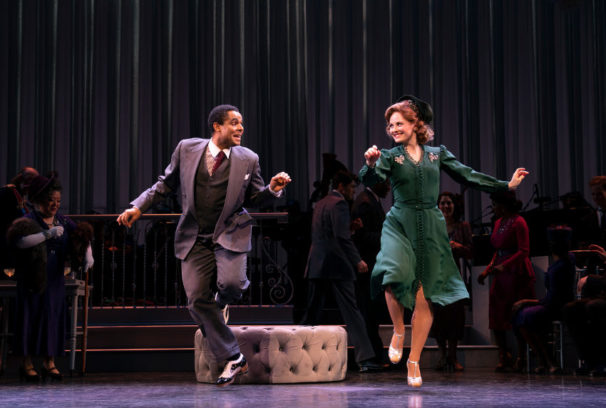
There is plenty of gorgeous melody, and the extended instrumental dance sections are the musical highlights – all praise to the original orchestrations by the great Hans Spialek and the 29-piece Encores Orchestra led by Rob Fisher. But there are clunkers among the songs. The bittersweet “Spring is Here,” which became a standard, is one exception. The jaunty, rhythmic “How to Win Friends and Influence People” was also a highlight, and Bergasse created an inspired multi-layered tap sequence that built to the full ensemble.
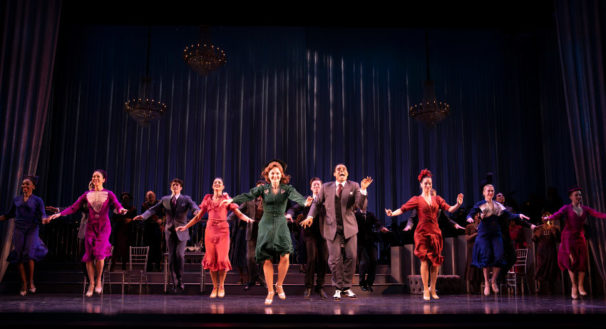
That song, and the robust expansiveness of that number, made it believable that this was the work of the On Your Toes team. But much of the time, this revival was mainly of historical interest; even in an adaptation that featured considerable cuts in the book, many moments felt flat if not downright awkward. But the saving grace was Mearns’ effervescence and her ability to make her character’s guileless innocence the emotional center of the show.
Photo credit: Joan Marcus for New York City Center
Susan Reiter covers dance for TDF Stages and contributes regularly to the Los Angeles Times, Playbill, Dance Australia and other publications.
